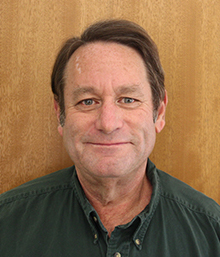These are difficult times for the average Platte Countians who pride themselves on civic awareness and are grateful for economic prosperity, but they also have a fondness for affordable country living at the city’s door step. The latter phrase is a nod to the slogan of the old Platte County Business and Development Association, of which most members longed for rapid growth in the Northland. Or they got involved to get basic services such as sewer and water promised in decades past but never delivered by city hall after annexation by Kansas City.
Well the growth is here and so is a significant crossroads. Are Kansas City’s boulevard and parkway standards, public green space along important arterial streets, going to be applied to mammoth development projects in Kansas City North between Interstate 29 and U.S. Highway 169?
Parks advocates fear standards will be lowered compared to those used south of the river on parkways to the detriment of citizens but an advantage for developers. Developers and backers say high standards are too costly and could stifle growth needed by the city.
A major story by reporter Lynn Horsley outlined this issue recently in The Kansas City Star. This was Platte County’s debut in regional news for 2015.
I say these are difficult times because it’s hard to tell if the average person is about to get bullied out of deserved quality or if community leaders are whittling on old city planning maps with common sense.
Kansas City taxpayers, including those of us who live outside the city but pay earnings and sales taxes, have in various ways backed more than $40 million from city hall for sewer lines and pump stations in the First Creek and Second Creek watersheds. Developers and city officials refer to it as the Twin Creeks area.
Planning for projects in this area was mentioned in the Dec. 31 issue of The Citizen as among the businesses honored recently by the Platte County Economic Development Council.
Those of us who measure numbers by the thrill of gas dropping temporarily below $2 a gallon have trouble wrapping our brains around numbers involved. Such as: future housing development worth hundreds of millions of dollars, housing expected to add another 75,000 residents to the Northland over the next 30 years and the 15,000-acre chunk being but a piece of the county’s growth puzzle.
I find it hard to believe that holding city hall and developers’ pocketbooks to the city’s plans for parkways will halt growth, which has flourished everywhere sewer and water lines were built.
Developers are likely set to make bunches of money either way. The question is just how much and how fast? Primary development players at the table, Hunt Midwest and MD Management, are among the city’s largest, oldest and most powerful entities in the metro area. They have noted players in the fold, such as attorney Jim Bowers representing them.
Average people who jog along a parkway or enjoy their aesthetic and economic values don’t have time to attend meetings or pour over reams of plans and paperwork, but they should take note when people representing them have sounded alarm that there are disagreements between pro-development and green space advocates. Among those citing concerns to The Star were Dave Mecklenburg and Allen Dillingham, Northland residents and members of the Kansas City park board.
Citizens and public officials outside of Kansas City need to be listening and perhaps lending support.
I say perhaps because, as I noted, these issues are difficult. One aspect being that the old Platte County had a rural humbleness that many of us valued greatly. Parkways lined with mansions doesn’t necessarily line up with that tradition.
But somehow quality must be played well. I confess a sentimental attachment to the area in question because it holds the Northland’s best remaining examples of native prairie grasses and a few scattered wildflowers. They survived along old streets in ditches and right of ways because development lagged.
Growth is making major changes now. What kind of quality will growth have and will it reflect Platte County? Or will whatever is most affordable make us anyplace USA?
Those decisions are upon us.
Kansas City councilman Ed Ford invoked another old phrase to The Star: the future of Kansas City is in the Northland. I wish all of the KC metro area cared as much about Platte County’s undeveloped land as they do the terminals or their potential replacements at the Kansas City International Airport.
But those of us who live here are likely on our own regarding real estate development and parkways.
Bill Graham, who lives in the Platte City area with his family, may be reached by e-mail at editor@plattecountycitizen.com.


